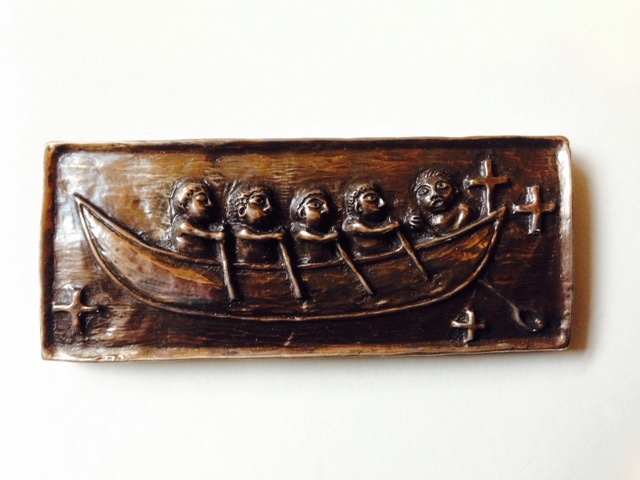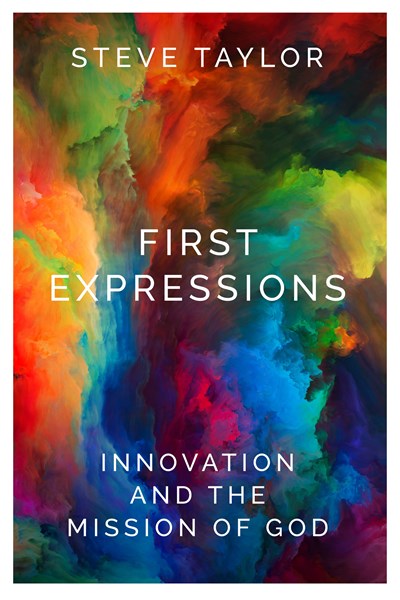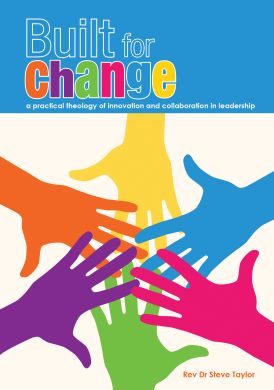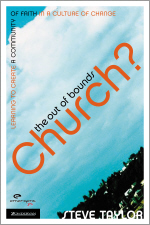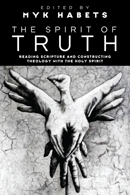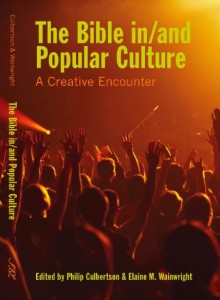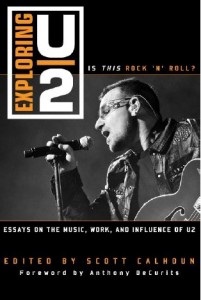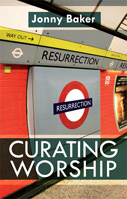Saturday, February 09, 2013
Pocket lamp worship: creationary
This week I led worship with Jonny Baker’s Pioneers at CMS on Tuesday, then at the mission shaped ministry board meeting on Wednesday. Both involved pocket lamp worship.
I wanted to use what was around me, and the pocket lamp was a Christmas gift and being in the Northern Hemisphere winter, connected with all the dark/light experiences I was processing. The pocket lamp opens and shuts. So it allowed a range of tactile, participative interaction. Here is what I did.
Call to worship – the making of Ovo, at the Amsterdam Light Festival (I’ve blogged about that here).
Praise – Light from God is a gift. So the invitation to take a light, turn it on, and give it to another person. So we can only be given light. Be thankful for gift.
Confession – We all at times turn off the light we’ve been given. So as an act of confession, close your light and recall, silently, the times you’ve turned off the light.
Word – The lectionary text was Isaiah 6:1-8. It of course, has words of absolution. And words of mission.
Petition – So before we are sent, if you’re anything like me, you feel inadequate. So, exchange the light with the person beside you. Hold, and be held, in silent prayer for each other.
Intercession – I had placed newspaper around the roome. People were invited to place their light on an area of the world they wanted to pray for. But before that, a reminder of being sent, as the kiss of God into dark places.
It seemed to work well both places. Didn’t take long to put together, which suited my sabbatical writing commitments fine. It took about 15 to 20 minutes, and with more time it would have been helpful for folk to unpack the connections they made between text, actions and pocket lamp. I like it when worship emerges from the ordinary and everyday.
(This is another entry in dictionary of everyday spirituality, under the heading L is for Lamps – pocket lamps).
Wednesday, January 16, 2013
creative resource: British Library Illuminated Manuscripts now online
The British Library has just put online their illuminated manuscripts, both images and information. Since the Library holds one the richest collections of medieval and renaissance manuscripts in the world, this is a rich resource.
Since I’m currently working on the Emmaus Road, a search produced 8 images. Here is one from a Psalter, England, Central (Oxford); 1st quarter of the 13th century, before 1220. (I love how the legs are disappearing up, a reference perhaps to Ascension. Also love the fish on the table, a creative addition to the normal bread/eucharistic references).
This is one of 56 images in the Psalter. Imagine a Bible with 56 coloured images, hand crafted. Such a contrast to the text only versions that currently dominate the market! That surely says something about creativity and value and provides food for current Bible reading practices. (For more of my reflections on this theme, see faith shaped by art not words)
By contrast, here is one from Bruges, Belgium, in the 1400s, where we were a few weeks ago.
Of even more interest/usefulness is their public domain copyright policy –
The Catalogue of Illuminated Manuscripts content is now available for download and reuse. Although still technically in copyright in the UK (and a number of other common law territories) the images are being made available under a Public Domain Mark* which indicates that there are no copyright restrictions on reproduction, adaptation, republication or sharing of the content available from the site.
Friday, December 28, 2012
Multi- sensory storytelling
“Passionate people wanted to produce something new”
I went today to the recently opened Historium in Bruges. A wonderfully creative way to access history, that has some challenges for Christian communication and shows the enormous potential of storytelling.
It began with a question, what was it like in the Middle Ages?
The question was answered by multisensory storytelling. They took a red robe, a green parrot and the girl model from a van Eyk painting, Madonna with Canon, to create a narrative, told in audio and through video screens cunning placed around a set, spread over 7 rooms). Each set involved senses, simulating fog, snow, local produce. Animation was used, both to ensure historical accuracy, in the backdrops, costumes, hats, jewellery, but also to enhance the storytelling. The 7 sets/rooms allowed a focus on a wide range of life, customs to guilds, public baths to harbour, created from miniatures and art of the time. The goal is an emotional insight. In other words, not just information. But neither just entertainment. But a use of senses to help people make a connection, and thus to bring the past into the present.
After the experience comes the information, a room full of displays to browse. Imagine if church history or Biblical studies were taught in this way!
It is important to note also the place of collaboration – film makers, musicians, historians, business people all working in partnership.
I’m hoping (numbers willing) to teach a course in 2013 (starting April) on the place, potential and possibility of senses in mission and ministry, working with a local artist and local storyteller. What I saw today may well become a contemporary case study.
For a video of the making –
Historium: The Making Of from Historium Brugge on Vimeo.
Friday, December 07, 2012
creating the church of tomorrow
Twice in the last few weeks, a prayer by Oscar Romero has come my way. Romero was a Catholic Archbishop in El Salvador, assassinated on 1980, while celebrating Mass in a small chapel in a cancer hospital where he lived.
God of hope,
Help us to step back and take the long view.
Remind us that what we do in our lifetime
is only a tiny fraction
of the magnificent enterprise that is your work..
Nothing we do is complete, which is only a way of saying that your realm always lies beyond us.
No statement says all that could be said.
No prayer fully expresses our faith.
No one program accomplishes the church’s mission.
No set of goals includes everything.
Help us remember what we really are about:
we plant seeds that will one day grow.
We water seeds already planted,
knowing they hold future promise.
We lay foundations that will need future development.
We provide yeast that produces
far beyond our capabilities.
We cannot do everything.
Knowing this frees us, for it enables us to do something.
It may seem incomplete, but it is really a beginning,
a step along the way.
Our efforts provide an opportunity
for your grace to enter and do the rest.
You are the master builder, and we work with you.
We may never see the end results that are known to you.
Even so, we are prophets of a future
that holds your promise.
Amen.
Given the way the prayer has found me, it seemed appropriate that it become the devotional for our team retreat on Thursday. I provided two ways to respond. One was to pray by planting a seed of petition. The other was to pray by watering as thanks. Outside (because dirt and water don’t go with carpet), I had placed a seed tray and a pot of colour from home.
Inside, we said the prayer together, a different person taking a phrase each. We then sat with the prayer in silence for 5 minutes. I then invited folk to move outside. And to either plant a seed “we plant seeds that will one day grow” or to water the pot “We water seeds already planted.” We then concluded by again saying the prayer together, again a different person taking a phrase each.
The focus of the retreat day was strategic planning and it was just lovely to begin the day watering and planting, reminding each other that- “We cannot do everything. Knowing this frees us, for it enables us to do something.” (To end the day, we shared communion and had a party. But that’s another post).
Friday, November 02, 2012
throwing things at Jesus: Messy church worship at Adelaide Mission shaped ministry course
Messy church worship at Adelaide Mission shaped ministry course. Each week at the 2012 Adelaide Mission shaped ministry course, a different form of worship is introduced. As much as possible the team has been inviting local fresh expressions to share with us something of their worshipping life.
A few weeks ago, a local messy church group presented. They finished by inviting us to “throw” stuff at Jesus! On each table had been placed some wrapped up objects, newspaper held by tape. People were invited to take a ball and to imagine all their “stuff” – all their burdens and fears – were being placed in that ball. When they were ready, all the balls were placed in a central cloth. On the count of 1-2-3, these were thrown at the cross, with the shout “Thankyou Jesus.”
In some ways it was quite childish.
Yet I found it quite personally moving.
I realised I did have some stuff I was carrying. So to channel that into the paper, to have it move from internalised to externalised, and then have it released, thrown, at the cross of Jesus, was quite releasing.
And it is a way of understanding the atonement, the cross of Christ. As the One who catches all our stuff, takes all our sh*t, releases us, to be thankfully grateful.
Monday, October 08, 2012
I bind unto myself today
It’s quite lovely to wake up this morning and experience this wrapped around my wrist.
It was the result of Church last night. God as creator, redeemer, sustainer – 3 threads woven into one. We are a bead, an invitation to find ourselves woven into the Trinity.
A really embodied worship experience, that lingers into the week. (As a practical expression of this – Seeking holy ground)
Sunday, October 07, 2012
seeking holy ground article
I was asked a few weeks ago to contribute an article to Journey, the Uniting Church of Queensland monthly newspaper. It’s become the front page headline for the October edition – titled Seeking Holy Ground. For those interested, it is here, or below … (more…)
Tuesday, September 11, 2012
the sense in mission: a childhood resource
Here Comes Frankie!
is a children’s book by Tim Hopgood. It tells the story of Frankie, who discovers that when he plays the trumpet, he can not only hear, but see and smell. “The air was filled with colourful music and bursts of weird and wonderful smells.”
Which means that everything begins to change. Frankie’s parents begin to dance and all down the street people begin to tap and clap.
It’s a book full of colour (paint chips front and back), styled in a way that insists you touch each page. It’s based on synthaesthesia, the condition in which some people (Miles Davis and Jean Sibelius) actually do see and smell music.
A children’s book, yet a wonderful reminder of the priority of sense in mission, the way that sound, sight and smell change our world, invite people into God’s mission in our communities (join God’s Conga line, to use the image of mission from Stephen Bevans).
Thursday, August 23, 2012
taking the sense making faith challenge
I was most pleased with how the Magarey lectures whole Bible, whole people, whole mission series of retreat reflections ended. I concluded by pointed out how the whole time had been a risk. They had trusted me and they I had trusted them. Together we had trusted God and it had been rich.
So why not continue this pattern of risk together? In preparation I had identified 5 “sense” projects (gathered from Sense Making Faith Body Spirit Journey). I had typed them up, photocopied them and cut them into separate cards. I walked around the room, inviting folk to take one.
Here was the risk. That rather than me give them some options that they might or might not to when they got back home, that they would commit to do whatever sense project was on the card they chose.
And the next time they gather, to be accountable by telling the stories of what happened.
And then I played the scene from Lion, Witch and the Wardrobe, when Lucy steps through the wardrobe into another world. It’s a wonderful 2 minutes of taking a risk, to discover a whole new world. A wonderful invitation, a great ending.
Here were the 5 sense challenges. Dare you to take close your eyes, place your finger on the screen and just do whatever one your finger is closest to ….. (more…)
Saturday, August 04, 2012
multi-sensory worship at mission shaped ministry Adelaide 2012
A second week of mission shaped ministry course on Thursday evening.

Each week includes worship. We have a commitment to try and worship in ways that don’t include singing. This is not because singing is not important. But it tends to be a default in Christian gatherings. And since mission shaped ministry course is about exploring new possibilities, it seemed appropriate to place some limits, in the hope of generating creativity.
It certainly worked in Week 2. One of the pioneer leaders training at Uniting College, and a candidate for ordained ministry, Karen Paull, led. She had prepared a central table, on which was a compass. We were invited to gather based on our location in Adelaide. In groups we were invited to reflect on our context:
- Where were the weeds in our communities?
- Where were the good things?
This led into prayer. Weeds were placed in the blue rubbish bin as an act of confession and intercession, while candles were lit for the goodness of the Christ-life. Finally, in benediction, we each took rosemary, which if placed in water in our homes, will grow roots and can be planted, an expression of us going to grow, to take root, to be the fragrance of Christ in our communities.
In 15 minutes, so many senses were engaged – smell of rosemary, hearing as we listened to those around us, touching in the candle lighting, seeing as we reflected on our communities. All amid classic Christian worship practices – of praise, confession, intercession, benediction. All within the framework of mission – gathering for and on behalf of our communities.
A rich, rich evening.
Sunday, July 29, 2012
Olympic Games opening ceremony as public ritual
On Friday I blogged about the way U2 craft remembrance into their public presence. I noted how the use of a single line –
Where’s Frank? 13 years ago, this very evening, we said goodbye to Frank Sinatra
becomes a “moment” that engages, deepens and honours. Such “moments” humanise, since all have suffered loss of some sort. They invite reflection, on who we are and how we are. They invite connection, with those who’ve gone before, with those around us, between leader and participant. These, I suggest are the skills needed in public worship and in the crafting of liturgy.
So it was intriguing to see an analysis of the Olympic Games opening ceremony, by an Anglican Dean, also note the importance of remembrance in the ceremony, and the way that such moments allowed spirituality to “leak” into the public arena.
The other moment where faith broke through was in the invitation to remember ‘those who are not here’. After the spectacle and the celebration, what heralded the arrival of the athletes was not a grand rhetorical climax but the silencing of the crowd, an act of recollection, the words of a prayer. For yes, unbelievably, we had all of ‘Abide with me’ sung quietly while a simple ballet on the theme of being lost and found was performed on the stage.
Wednesday, June 20, 2012
Finding words for worship
I’ve been asked to provide a call to worship at the Church Synod on Friday evening. My general rule of thumb is to work with what’s engaging me. Last week I posted this,
Which, with a bit of research, over the weekend I have shaped into the following Call to worship –
Leader: The cross,
offering reconciliation, making enemies friends,
All: May we, reconciled and reconciling, feel again Your call to mercy
Leader: The greenstone,
an item of treasure and value in Maori culture
All: May we, Your treasures in earthen clay, hear afresh Your call to value each other
Leader: The fishhook, carved in reference to Jesus invitation,
Come follow me: I will make you fishers of people
All: May we, Your fisher folk, experience anew Your call to mission
Leader: The fishhook, a pattern commonly carved in Maori culture
a symbol for a journey, speaking of the need for shared courage, wise leadership and safety in troubled times
All: May we, Your pilgrim people, find together new courage, wise leadership and surprising joy,
Leader: In our shared journey, Shaped always by this cross of Christ. Amen
Thursday, June 14, 2012
art as public mission
The South Australian Art Gallery has gone public, in a fascinating way. They have taken 13 paintings out of the Gallery and hung them, in public, in locations around Adelaide
Art Gallery director Nick Mitzevich says once the artworks are found, people might photograph, add to or take possession of them. “The surprise [of] where people have found the work is really part of the project,” he said. “Putting the works within the public domain allows everyone to be a part of it, so the work isn’t the artwork itself, it’s the whole project and how it might play out. (More here)
I love the risk involved (what if the art got wet, stolen, disfigured?), the creation of curiousity in public spaces.
I immediately wondered what “art” the church might want to place in public? What 13 “acts of service” could be “hung” to be discovered? More liturgically, what about doing this around a church festival, say Holy week, invite artists to make a station and rather than invite folk to your church to watch it, simply hung them in public? More worship orientated, why not a church service, where your theme was “hung” around the building and children (big and little) had to play hide and seek to find the various parts?
It reminded me of bookcrossing, plus the work of Ric Stott in Sheffield, in placing clay figures outdoors during Lent. It’s all art as public mission, a way to invite curiousity, to find our story beyond church walls.
Thursday, May 31, 2012
Trinity worship stations
Creationary: a space to be creative with the lectionary (in this case, visual images on themes of pilgrimage). For more resources go here.
On the weekend, I am leading some worship for a group of church leaders in the South East of the State. It is Trinity Sunday and as I reflected on the lectionary readings, and in particular Isaiah 6:1-8, a number of stations seemed to suggest themselves – ways to confess, to intercede, to respond, to commune.
Introduction:
There are many ways to engage the Word. Around the room are a number of stations. You can stay with one. Or you can move. After about 20 minutes a bell will ring. We will gather. If time, there will be space for a few people to share in insight that emerged from engaging the Word around stations. We will then move into communion together.
Confession and absolution station: Coal station
One way to respond to Isaiah 6 is to take time to examine “our lips.” In this Bible passage, the coal becomes a symbol of forgiveness that follows confession.
Take some time to reflect. In what ways have you been a “person of unclean lips”? In what ways do you “live among a people of unclean lips”?
Silently confession any areas of uncleanness that come to mind. Do this by touching the coal to your lips. It might be appropriate to touch your lips more than once.
Please take a coal from the bag and once you have finished, place your coal in the basin provided.
As you end your time at this station recalling the words from Isaiah: “Now that this has touched your lips, your guilt has departed and your sin is blotted out.”
Mapping station: “Here I am, Send me.” But where?
Take some time to look at the map. It is laid out, using stones, in the shape of South-Eastern South Australia. Take time to see if there is a place that God puts on your heart. You might like to light a taper and place it on the map in a place that you would like to pray for.
Eating station: “touched my mouth.”
Make yourself a savory snack.
Now enjoy eating your snack. As you do, reflect on the following. The three elements – crackers, cheese, gherkin – invite us to think about the three persons of the Trinity.
What happens if one is left out? What does each distinctive “person” add to our faith? What does each person and the faith of our church?
If you want, make yourself another. And keep tasting, reflecting …. This weekend we have focused on mission, on our taste in the community.
What might your church taste like to those in your community? As a result of this weekend, are there any different flavours you want to add into your church “taste”?
Drawing station: “And I said” What are you “saying”?
This weekend we have asked: What is mission? What does it mean for my church? Isaiah asks us how we will respond. He asks himself the question: “And I said” …..
As a result of this weekend, what do you want to say?
Take some liquid chalk. Write a word or phrase that might capture what you want to say.
(by writing it on the window. The chalk does come off. Promise!)
Take a second colour and write a word or phrase you want to pray that your church might start to say?
Colouring station:
Colour in the icon. Simply enjoy it. As you do ask God to speak to you through the activity.
